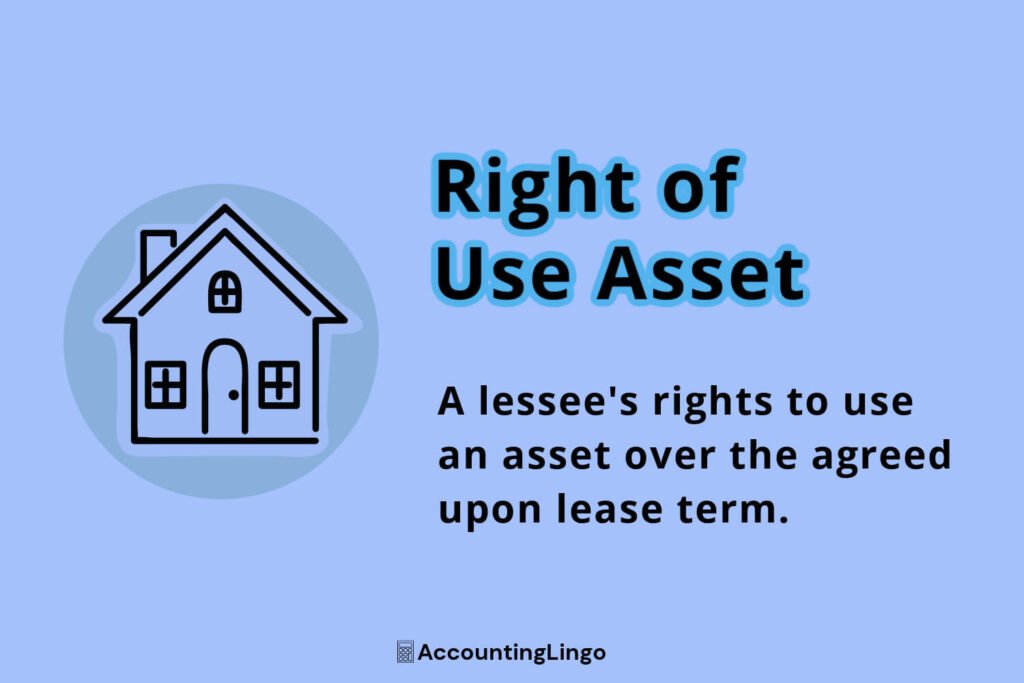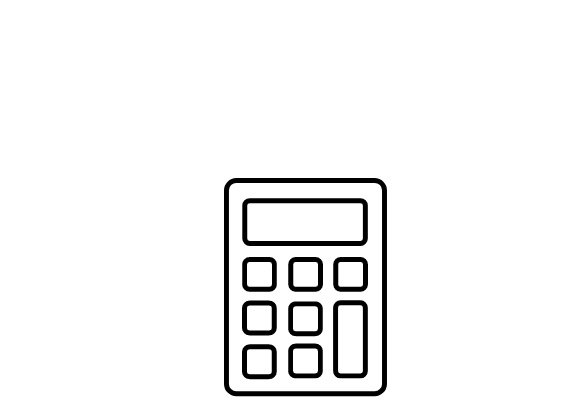
What is a Right of Use Asset?
A Right of Use Asset refers to a lessee’s rights to use an asset over the agreed upon lease term.
“A lessee’s right to use” -Harvard University
One often overlooked yet highly valuable asset that can significantly impact a company’s financial statements is the Right of Use (ROU) asset. Unlocking the value of this asset requires an understanding of the relevant accounting standards and their practical implications.
In this article, we will review the ROU asset and its significance in financial reporting. We will explore key concepts, such as lease accounting, recognition, measurement, and presentation. By fully understanding the ROU asset, businesses can make informed decisions, optimize their financial reporting processes, and unlock the value of this often underutilized asset.
Concept of Right of Use Asset
The concept of right-of-use assets is rooted in lease accounting. A lease is a contractual arrangement between the lessor (the owner of the asset) and the lessee (the party that obtains the right to use the asset). In traditional accounting, leases were classified as operating or finance leases.
Although, with the introduction of the International Financial Reporting Standard (IFRS) 16 and the Financial Accounting Standards Board (FASB) Accounting Standards Codification (ASC) 842, a new approach to lease accounting was enacted.
Under the new lease accounting standards, all leases, except short-term and low-value asset leases, must display on the balance sheet as right-of-use assets and lease liabilities. The right of use asset represents the lessee’s right to use the leased asset throughout the lease term. It is an intangible asset measured at the present value of lease payments.
Lease terms, discount rates, and variable lease payments are also taken into consideration. Recognizing the right of use asset brings greater transparency to a company’s financial statements. They then more accurately reflect its financial position and obligations.
The right of use asset is an important concept to grasp as it represents a significant portion of a company’s assets. This is especially true for businesses that heavily rely on leasing arrangements. By understanding the concept of the right of use asset, organizations can effectively manage their lease agreements, optimize their lease portfolio, and harness the true value of these assets.
Right of Use Asset on Balance Sheet
The recognition and reporting of right of use assets are of utmost importance for organizations for several reasons. Firstly, including right of use assets on the balance sheet provides a more accurate representation of a company’s financial position.
Before the implementation of the new lease accounting standards, operating leases were treated as off-balance sheet arrangements. This meant that companies were not required to disclose their lease obligations. This lack of transparency could lead to misleading financial statements and inaccurate assessments of a company’s financial health.
By recognizing and reporting right of use assets, companies can provide stakeholders with a more comprehensive view of their financial position. This allows for better decision-making and risk assessment.
Additionally, the inclusion of right of use assets on the balance sheet brings consistency to financial reporting. It better aligns with the principle of matching expenses with revenues and reflecting the economic substance of lease arrangements.
Furthermore, recognizing right of use assets enables organizations to assess their lease portfolio and make informed decisions regarding lease renewals, terminations, and renegotiations.
By clearly understanding their lease obligations and the value of their leased assets. Companies can optimize their lease agreements, reduce costs, and improve their overall financial performance.
Accounting Standards for Right of Use Assets
The accounting standards that govern the recognition, measurement, and presentation of right-of-use assets vary depending on jurisdiction. Two widely adopted standards for lease accounting are the International Financial Reporting Standard (IFRS) 16 in addition to the Financial Accounting Standards Board (FASB) Accounting Standards Codification (ASC) 842.
IFRS 16, which was issued by the International Accounting Standards Board (IASB), applies to entities reporting under the IFRS framework. It requires lessees to recognize right of use assets and lease liabilities for all leases not including short-term leases and leases of low-value assets.
Furthermore, the standard provides specific guidance on measuring the right of use asset. This includes lease term, discount rate, and variable lease payments. Additionally, IFRS 16 introduces new disclosure requirements to provide users of financial statements with relevant data about a company’s lease obligations.
ASC 842, issued by the Financial Accounting Standards Board (FASB), applies to entities reporting under the US Generally Accepted Accounting Principles (GAAP). Similar to IFRS 16, ASC 842 requires lessees to recognize ROU assets and lease liabilities for most leases.
This excludes short-term leases and leases of low-value assets. The standard provides guidance on how to measure the right of use asset, including lease term, discount rate, and variable lease payments. ASC 842 also introduces new disclosure requirements to enhance the transparency of lease arrangements.
Compliance with these accounting standards is essential for organizations to report their right of use assets and lease liabilities accurately. By adhering to the requirements set forth by the accounting standards, companies can ensure the integrity of their financial statements.
Identify & Measure Right of Use Assets
Identifying and measuring right of use assets involves several steps to ensure accurate reporting. The first step is to identify lease arrangements within the organization. This requires thoroughly reviewing all existing contracts and agreements to determine whether they contain lease components.
Once lease arrangements have been identified, the next step is determining the lease term. Lease terms include the non-cancellable period of the lease and such periods covered by an option to extend or terminate the lease. It is essential to accurately determine the lease term. It directly impacts the measurement of the right of use asset.
After determining the lease term, the next step is to calculate the present value of lease payments. This involves discounting future lease payments using an appropriate discount rate. The discount rate therefore should reflect the lessee’s incremental borrowing rate, which is the rate of interest the lessee would have to pay to borrow funds to obtain an asset of similar value.
After the present value of lease payments has been calculated, it is necessary to consider initial direct costs incurred by the lessee like legal fees or broker commissions, and add them to the measurement of the right of use asset. This therefore ensures the initial costs associated with obtaining the right to use the leased asset are accounted for.
Determining Value of Right of Use Assets
Determining the value of right of use assets can pose several challenges for organizations. One common challenge is the complexity of lease agreements, especially for businesses with many leases or leases with intricate terms and conditions. Identifying lease components and determining lease terms can be time-consuming and require a thorough understanding of the lease arrangements.
Another challenge is determining the discount rate used to calculate the present value of lease payments. The discount rate should reflect the lessee’s incremental borrowing rate, which may vary depending on factors such as creditworthiness, lease term, and the nature of the leased asset. Estimating the appropriate discount rate can be challenging. Especially for companies with limited access to market borrowing rates or complex capital structures.
Additionally, the measurement of right of use assets may be impacted by variable lease payments, such as payments based on sales or usage. Determining the appropriate measurement for variable lease payments requires careful consideration of the lease agreement’s terms and conditions and reliable estimates of future sales or usage.
Furthermore, the initial adoption of the new lease accounting standards may pose challenges for organizations. The transition process can be time-consuming and resource-intensive, particularly for organizations with an extensive lease portfolio.
Right of Use Assets on Financial Statements
Recognizing right of use assets significantly impacts a company’s financial statements. Before the new lease accounting standards were implemented, operating leases were treated as off-balance sheet arrangements, which meant that lease obligations were not reflected on the balance sheet.
With the recognition of right of use assets, companies must include these assets on the balance sheet, increasing the total assets reported. Therefore, it reflects the value of the leased assets and the corresponding lease obligations.
Additionally, recognizing right of use assets impacts the income and cash flow statements. The lease payments associated with right of use assets are classified as operating expenses or finance costs, depending on the nature of the lease agreement. Operating lease costs are recognized on a straight-line basis throughout the lease term. Finance lease costs include both interest expense and amortization of the right of use asset.
Furthermore, recognizing right of use assets affects key financial ratios and performance indicators. Ratios such as debt-to-equity, return on assets, and interest coverage are directly impacted by including lease liabilities and right of use assets on the balance sheet.
Right of Use Asset Disclosure Requirements
The new lease accounting standards, such as IFRS 16 and ASC 842, introduce enhanced disclosure requirements for right of use assets. These disclosure requirements aim to provide users of financial statements with relevant information about a company’s lease obligations, lease assets, and the impact of leases on financial performance.
The disclosure requirements include detailed information on the nature and extent of a company’s lease arrangements. This consists of a breakdown of lease liabilities by maturity, significant lease terms and conditions, and a summary of lease assets by major class or type.
Additionally, companies must disclose the discount rate used to calculate the present value of lease payments. Any significant judgments and estimates applied in the measurement of right of use assets must be disclosed as well.
Furthermore, the new lease accounting standards require companies to disclose the impact of right of use assets on financial statements. This includes the classification of lease expenses, the impact on key financial ratios, and any changes in lease arrangements during the reporting period.
Compliance with the disclosure requirements is essential for organizations to provide stakeholders with transparent and reliable information about their lease obligations and the value of their lease assets.
Right of Use Asset Example
Right of use assets are common in industries where leasing arrangements play a significant role in business operations. Some examples of industries where right of use assets are prevalent include:
Retail
Retail companies often lease commercial spaces for their stores, warehouses, and distribution centers. Right-of-use assets in the retail industry includes leased properties, equipment, and vehicles used for transportation and logistics.
Airlines
Airlines lease aircraft, engines, and other equipment to support their operations. Right of use assets in the airline industry includes leased aircraft, spare parts, and ground support equipment.
Manufacturing
Manufacturing companies often lease manufacturing facilities, machinery, and equipment to meet production needs. Right of use assets in the manufacturing industry includes leased factories, production lines, and specialized machinery.
Hospitality
Hotels and resorts often lease properties, furniture, fixtures, and equipment to provide accommodation and hospitality services. Right of use assets in the hospitality industry includes leased properties, hotel rooms, and restaurant facilities.
Healthcare
Healthcare organizations lease medical equipment, office spaces, and specialized facilities to deliver healthcare services. Right of use assets in the healthcare industry includes leased medical devices, diagnostic equipment, and clinic spaces.
These examples highlight the diverse range of industries where right of use assets are common. The recognition and reporting of right of use assets are essential for these industries to accurately reflect their lease obligations and the value of their leased assets.
Conclusion
Unlocking the value of right of use assets is a crucial step for organizations in optimizing their financial reporting processes and making informed decisions. Although determining the value of right of use assets may pose challenges. Organizations can overcome these challenges by investing in robust lease management systems, seeking professional assistance, and dedicating sufficient time and resources to ensure accurate reporting.
Additional Resources
Other helpful articles may include:
What is Deferred Rent Accounting?
Assets that cannot be Depreciated
What is an Asset?
